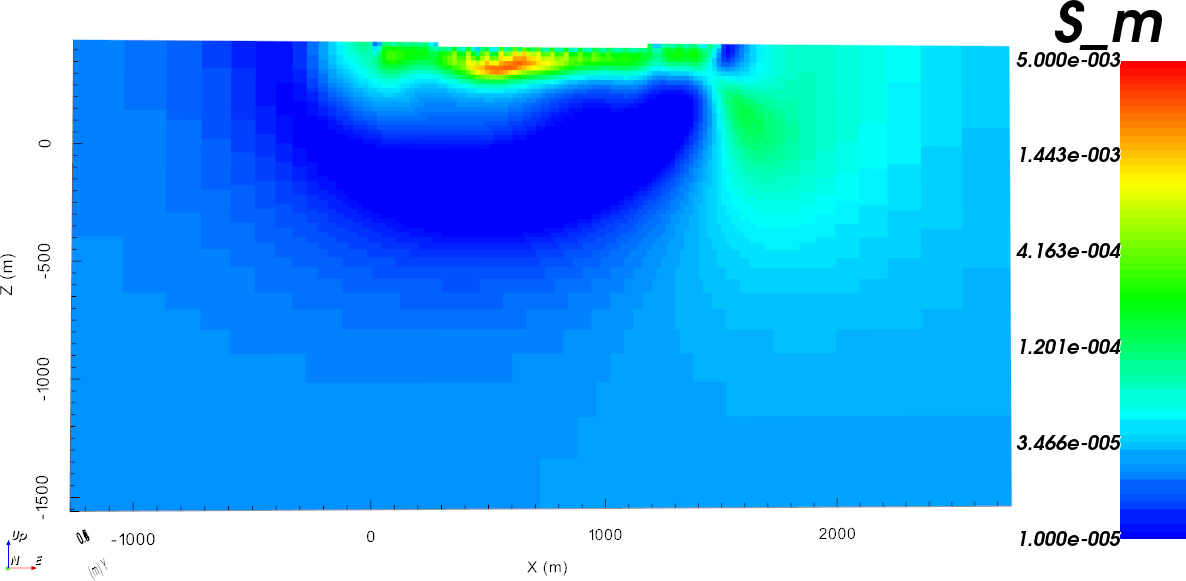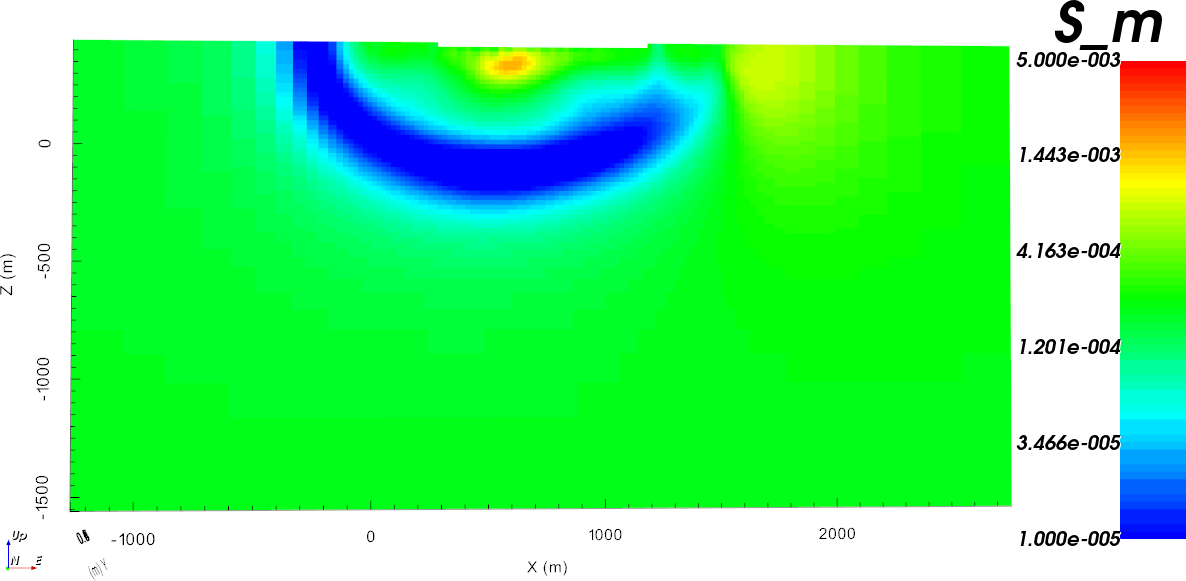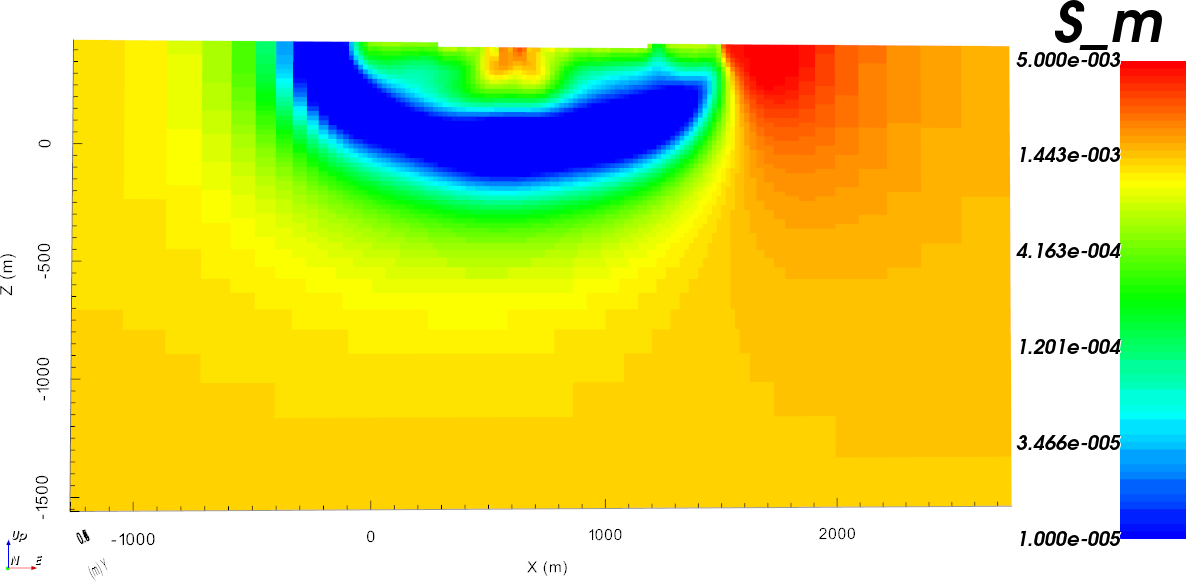9.5.2. 2D Inversion

In this section, we will invert the simulated data in 2D as a pre-processing step for the 3D inversion.
9.5.2.1. Setup for the Exercise
Open GIFtools
Tip
Requires at least
GIFtools 2.26(login required)
9.5.2.1.1. Extract 2D data objects
In the previous simulation section, we have
generated a DC3Ddata object, which we first want to invert in 2D:
- Assign simple uncertainties
% = 15
floor = \(0.05\)
Copy the LineID from the DC3Ddata object
- Seperate the survey lines
Export the 2D topography at 20 m resolution.
9.5.2.1.2. Explore the model space
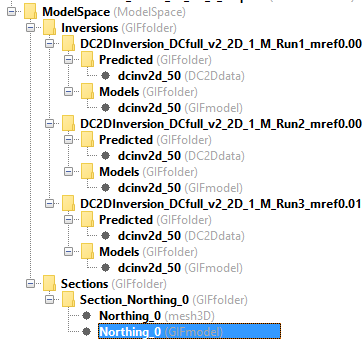
Before attempting to invert all data, it is good practice to test different assumptions on a single line. First let’s test different reference conductivity values by running a series of 2D inversions.
- Create a DC2Dinversion object to serve as a template
Set \(\alpha_s=0.0025, \alpha_x=\alpha_z=1\)
Select data from Line 7 (directly above the conductive kimberlite)
Create a Model Space object
Edit the Model Space inversion options and set
mrefover a range \([1e-5,\;1e-2,\;4] in log space\)Upon completion, Load the results First to target and Extract model section
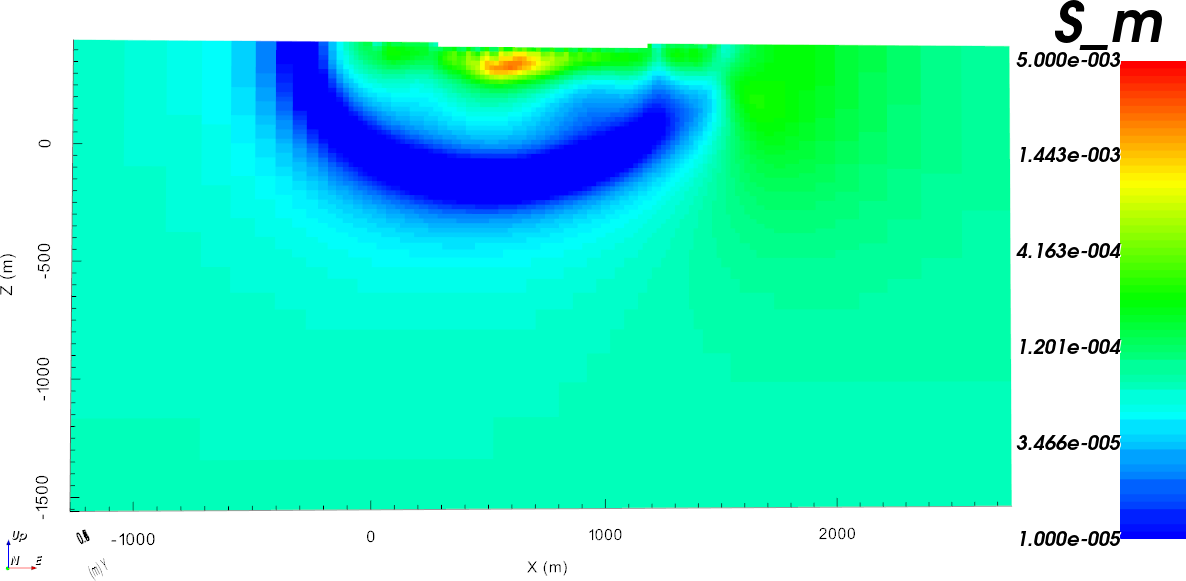
|
[OPTIONAL]
-Create a DOI using two of the recovered models
Note
Changing the reference conductivity value can drastically change the solution at depth, which can be used to estimate the Depth-of-Investigation (DOI) of a geophysical experiment.
9.5.2.1.3. Run a Batch Inversion
We have a total of 10 DC2Ddata objects that would like to invert. Rather
than manually inverting each line, we will make use of the Batch Inversion
object to speedup the process.
- Create a DC2Dinversion object to serve as a template
Set \(\alpha_s=0.0025, \alpha_x=\alpha_z=1\)
Set the reference conductivity to \(1e-4\) S/m
Run all
Upon completion, load all results
First to targets
9.5.2.1.4. Merge and interpolate models
While we can view each inversion result on their respective 2D mesh, in this section we will bring together the 2D models into our 3D mesh for later use.
- Merge results using the DCSurveyFull
lineIDproperty as reference Right-click on the `
BatchInversionClick Merge all
Select the 3D original mesh
Select the
DC3Ddataobject generated in theDC3DForwardCheck that
line IDsare correctClick
OKto proceed
- Merge results using the DCSurveyFull

Note
We have recovered conductive anomalies consistent across lines.
The chosen best-fitting half-space conductivity might be slightly too high due to the thin conductive overburden. The user is invited to repeat the experiment with different background conductivity values.
